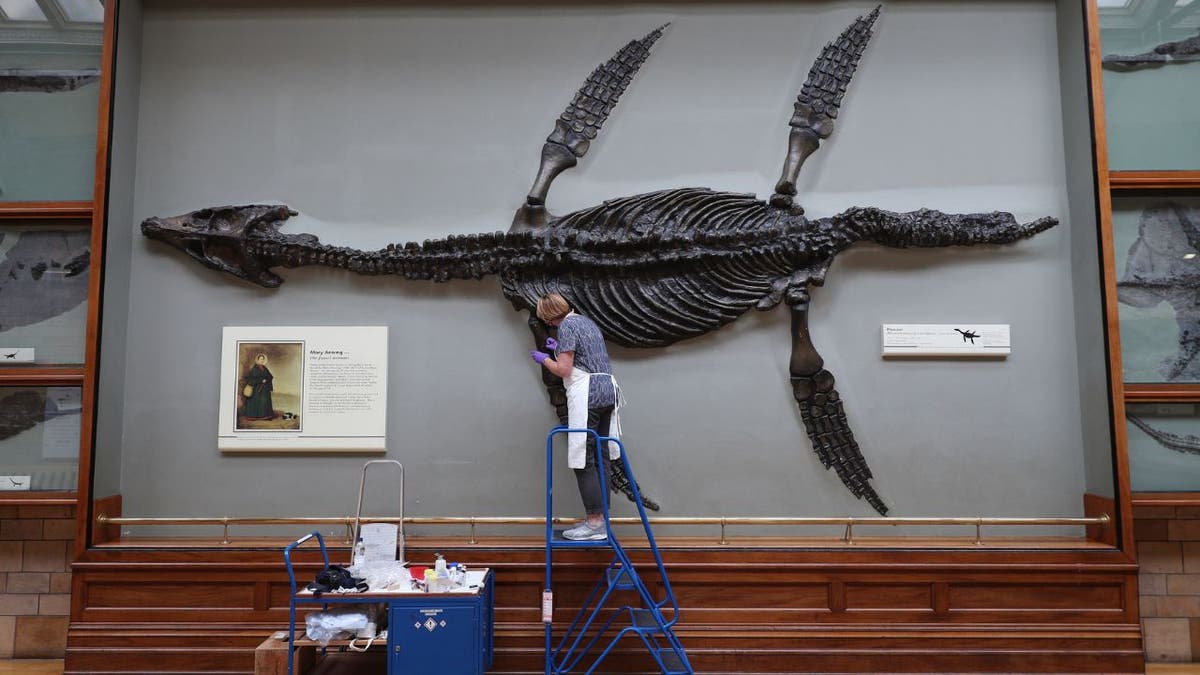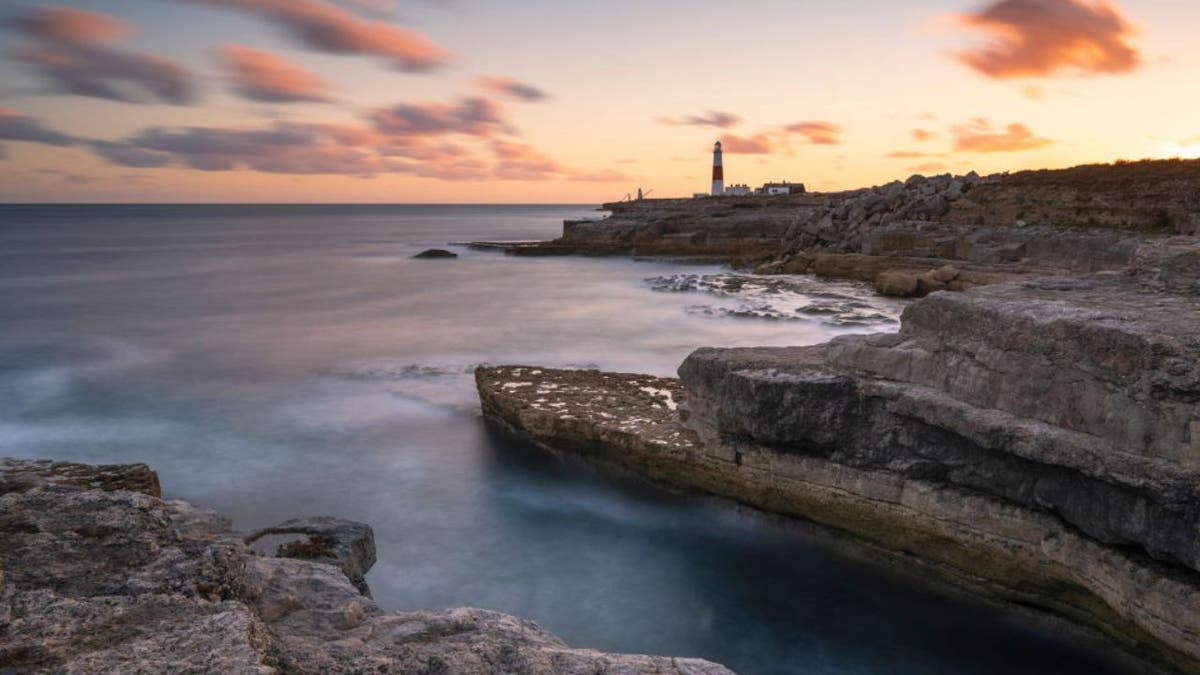113-million-year-old dinosaur tracks revealed after severe drought conditions plague Texas
Steve Brusatte of the University of Edinburgh discusses the conditions which led to a unique discovery of 113-million-year-old dinosaur tracks in Texas.
The gigantic skull of a predatory sea monster that preyed in the oceans millions of years ago has been excavated from a cliff in the United Kingdom in what scientists are saying is one of the most complete specimens of its type ever discovered.
The six-foot, five inch long skull belongs to a pliosaur, which was the largest carnivorous reptile that ever lived and was terrorizing its prey about 150 million years ago, scientists say. Pliosaur means "more lizard."
With 130 long and razor-sharp teeth, pliosaurs were deadly killing machines that measured up to 40 feet long and had a bite twice as powerful as a saltwater crocodile, which is considered to have the world’s most powerful jaws today.
DINOSAURS MAY HAVE BEEN KILLED OFF BY 'APOCALYPTIC DUST PLUME': STUDY

Collection assistant Kat Broomfield poses with the fossil skull of a pliosaur on May 19, 2021, at Dorchester, England. A similar type of skull was found in 2022 and has recently been excavated. (Finnbarr Webster/Getty Images)
"The animal would have been so massive that I think it would have been able to prey effectively on anything that was unfortunate enough to be in its space," Dr Andre Rowe from Bristol University told the BBC.
"I have no doubt that this was sort of like an underwater T. rex."
Rowe said it had four powerful flipper-like limbs to propel itself at high speed and that it was the apex predator in the ocean.
The skull was discovered on the southwest coast of England known as the Jurassic Coast, a 95-mile stretch of coastline in southern England, situated within the counties of Dorset and Devon. It is the only place on earth where rocks from the Triassic, Jurassic and Cretaceous periods can be seen in one place, representing 185 million years of Earth’s history, according to the Jurassic Park Trust, an independent charity responsible for protecting and conserving the coastline.
The skull was found buried in a cliff in 2022 by Philip Jacobs, an artist and fossil hunter, who was walking along the coast when he came across the snout of the pliosaur.

Conservator Claire Kelly cleaning the pliosaur at the Natural History Museum in London in July 2020. (Yui Mok/PA Images via Getty Images)
The skull had to be excavated during a treacherous operation where workers had to abseil down 50 feet from the top and dangle on ropes.
The skull is currently being kept in The Etches Collection Museum of Jurassic Marine Life in Kimmeridge, around seven miles west of the Jurassic Coast and more than 100 miles southwest of London, Steve Etches, a paleontologist told the New York Times. Etches has been collecting fossils for more than 40 years and was involved in the excavation.
MARYLAND PALEONTOLOGISTS DISCOVER 115-MILLION-YEAR-OLD RARE FOSSILS IN DINOSAUR PARK
Etches said the museum was working to get the skull into a display case for viewing in January while it will be featured in a special David Attenborough program on BBC One on New Year's Day.
Etches said finding the skull intact, with no bones missing, is the "discovery of a lifetime."
"There are some special features in it that we haven’t seen on the previous ones that have been discovered," Etches told the New York Times.
"And it’s the most complete. So the whole skull is there, there are no bones missing."
Etches said he considers Pliosaurs to be like lions of the sea.

Sunset over Portland Bill lighthouse in Dorset in the United Kingdom, along the southwest coast of England known as the Jurassic Coast, a 95-mile stretch of coastline in southern England, situated within the counties of Dorset and Devon. (Loop Images/Mark Bauer/Universal Images Group via Getty Images)
"They are rather like lions on the Serengeti," Etches said. "You get a pride of lions, but thousands of antelope and everything else. It’s the same as the Jurassic seas."
Etches told the BBC he is convinced the rest of the beast is embedded in the cliff and he told the New York Times it could cost more than $300,000 to excavate, which he hopes to raise.
CLICK HERE TO GET THE FOX NEWS APP
"I stake my life the rest of the animal is there," Etches told BBC News and warned that time was of the essence given the cliff is rapidly eroding.
"This part of the cliff line is going back by feet a year," Etches told the BBC.
"And it won't be very long before the rest of the pliosaur drops out and gets lost. It's a once in a lifetime opportunity."





















